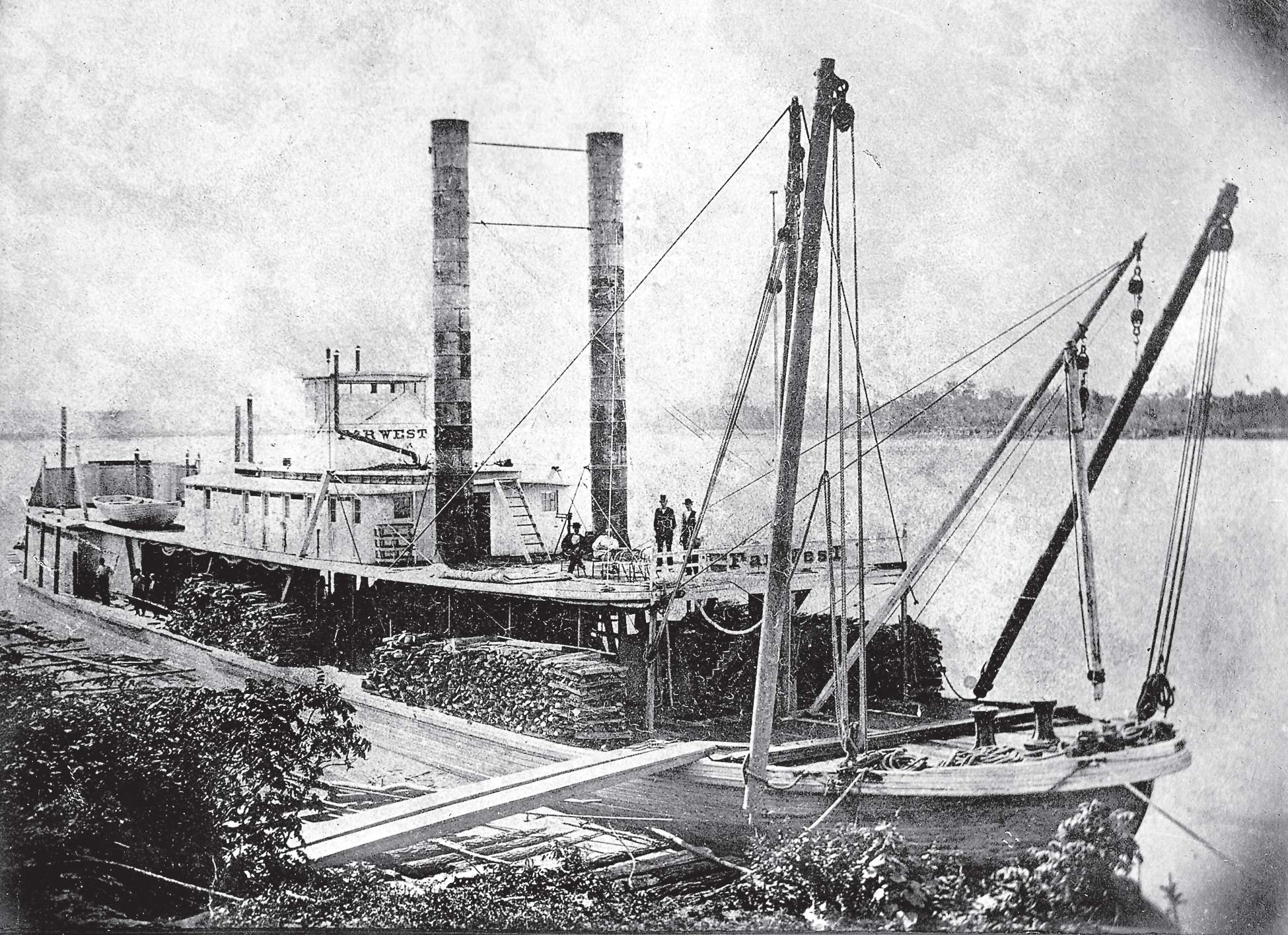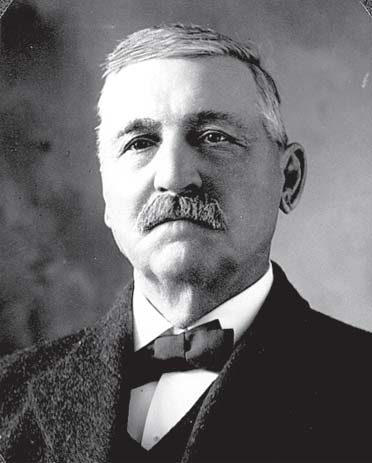The north-flowing Red River was the major transportation route used by the first non-Indian residents of North Dakota in the early 1800s. They had come up the Red River from the Winnipeg area to Pembina where they settled.
The south-flowing Missouri River was the primary water route between St. Louis, Missouri, and several points in North Dakota, including Fort Union in the northwestern part of the state.
The MétisPeople who are part American Indian and part European (may-tee) invented the Red River cart. These ox carts became the primary means of transportation for the fur trading companies, which traveled in caravansGroup traveling in a line between Fort Garry (Winnipeg, Manitoba), Pembina, and St. Paul, Minnesota.
The Métis and other early traders also used sleds pulled by teams of dogs as a means of transportation during the winter. Dog sleds were commonly used to make the 70-mile trip between Pembina and Fort Garry, as well as the 400-mile trip between Pembina and St. Paul.
When steamboats made their entrance into North Dakota, more people from the “outside world” were able to visit this region, and many of them settled near the rivers.
The first steamboat in North Dakota was the Yellowstone, which steamed up the Missouri River from St. Louis, Missouri, to Fort Union in 1832. Steamboat traffic increased rapidly. The 1860s were the peak years for steamboat travel on the Missouri River in North Dakota after gold was discovered in Montana. In 1867, 71 steamboats traveled on the Upper Missouri.Northern part of the Missouri River
The most famous Missouri steamboat trip took place in 1876. George Armstrong Custer and his 7th Cavalry from Fort Abraham Lincoln had just been defeated at the Battle of the Little Bighorn in Montana. The steamboat Far West,• Steamboat that carried wounded soldiers and news of Custer’s defeat back to Bismarck
• Piloted by Captain Grant Marsh piloted by Captain Grant Marsh, carried wounded soldiers and the news of Custer’s defeat back to Bismarck.
The first edition of The Bismarck Tribune was published in July 1873 using printing presses that arrived on the first train. In 1876, The Bismarck Tribune broke the news to the rest of the world that Lieutenant Colonel George Custer and members of his 7th Cavalry from Fort Abraham Lincoln had been killed at the Battle of the Little Bighorn in Montana. The Bismarck Tribune, now North Dakota's oldest newspaper, is still published today.
As the railroad advanced into North Dakota, steamboat travel declined. In 1890, North Dakota saw its last steamboat on the Missouri River.
Steamboating on the Red River began in 1859 with the Anson Northrup making the first trip from Fort Abercrombie to Fort Garry. Steamboat travel on the Red River continued for about 50 years. The last steamboat on the Red River sank at Grand Forks in 1912.
A steamboat also operated on Devils Lake every summer for 25 years. Captain Edward Heerman built a steamboat in 1882 and named it the Minnie HSteamboat that operated on Devils Lake for 25 years after his daughter Minnietta Heerman. It began operations on July 4, 1883. This steamboat carried passengers and freight back and forth from the city of Devils Lake on the north side of the lake to Fort Totten on the south side, as well as to other points along the lake.
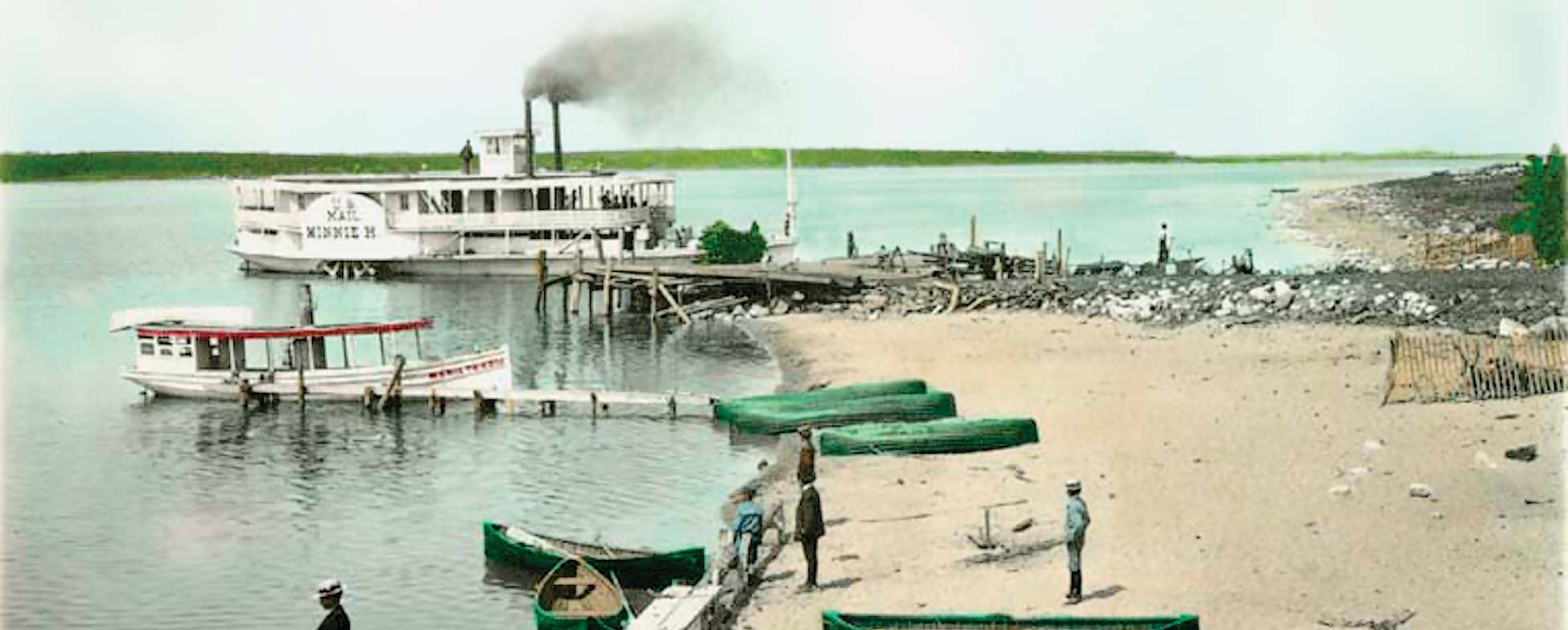
Figure 13. The Minnie H steamboat made its final trip on Devils Lake in 1908. (Hultstrand Collection, Institute for Regional Studies, NDSU, 2028.388)
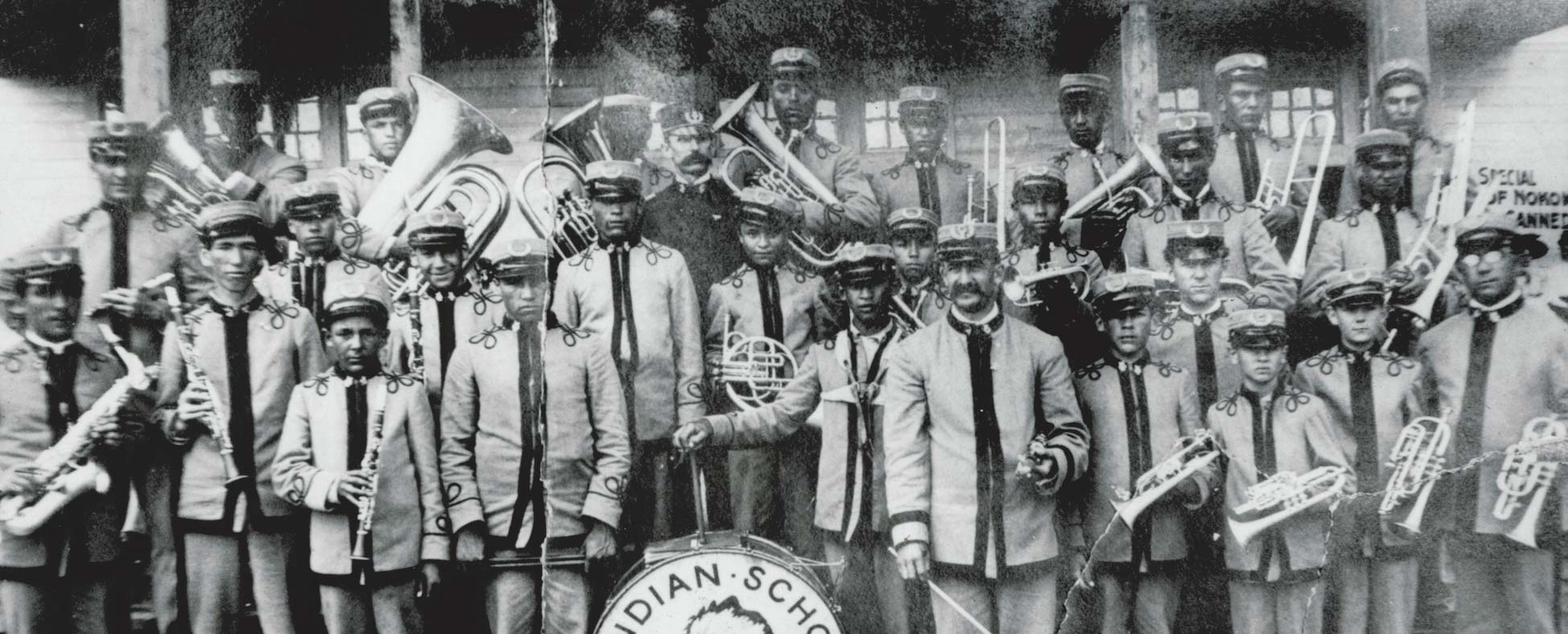
Figure 14. The Fort Totten Indian School Band, 1907. (SHSND 0982-001)
The city of Devils Lake was on the main line of the Great Northern Railway, and a branch line of the Northern Pacific went through Minnewaukan on the west end of the lake. Passengers and cargo traveled across the lake on the Minnie H to transfer between the two railroad lines.
A major two-week entertainment festival brought crowds of people to Fort Totten every summer. The ChautauquaTwo-week festival of entertainment and education held each summer at Fort Totten (shah-Tahk-wah) featured lectures, concerts, and plays. During this two-week period, the Minnie H often carried as many as 3,000 passengers back and forth between the city of Devils Lake and Fort Totten.
Each year, the water level of Devils Lake got a little lower. By the fall of 1889, the lake level had dropped so much that the city of Devils Lake was 1½ miles away from the boat landing on the shore of the lake. Even though the Minnie H continued service between other points on the lake, the city of Devils Lake was no longer on the route.
The final trip of the Minnie H was made in the fall of 1908. The lake’s water level had dropped so far that the steamboat could no longer get to any of its docks. The Minnie H was dismantled (taken apart). The Minnie H Elementary School now stands on the site where the Minnie H docked at the city of Devils Lake.
Captain Heerman took the pilot house to his yard in Devils Lake, where his grandchildren and great-grandchildren used it as a playhouse. The pilot wheel is now an exhibit at the North Dakota Heritage Center & State Museum in Bismarck, and some other parts of the boat are displayed in various museums in the state.
Another form of transportation had a busy but short life in North Dakota. The Minnesota Stage Company ran a stagecoach line on the Minnesota side of the Red River from Fort Abercrombie to Georgetown, Minnesota, near present-day Fargo. In 1871, the stagecoaches began crossing the Red River on a ferry at Georgetown and continued north on the Dakota side of the river to Pembina and Fort Garry. The stagecoach era in the Red River Valley came to an end with the coming of the railroad.
The tracks of the Northern Pacific Railroad reached Bismarck in 1873, and in 1876, a gold rush to the Black Hills of present-day South Dakota began. There was a sudden need for transportation between Bismarck and Deadwood. The stagecoach answered this need.
The Dakota Territorial legislature approved making a road from Bismarck to Deadwood. This 240-mile “road,” which was really only a trail, became known as the “Bismarck-Deadwood Stage Trail.”
The Northern Pacific Railroad organized the Northwest Express and Transportation Company and began service along the Bismarck-Deadwood Stage Trail in 1877. Stagecoaches were soon running daily between Bismarck and Deadwood. Besides operating 26 stagecoaches, the company also carried mail and hauled freight in wagons pulled by teams of oxen or horses.
The Northwest Express and Transportation Company employed 175 men and was very busy carrying passengers and freight between the two towns. A one-way passenger fare was $23, which was very expensive at that time. During the summer of 1878, all of the Bismarck hotels were filled with people heading for the gold fields of the Black Hills.
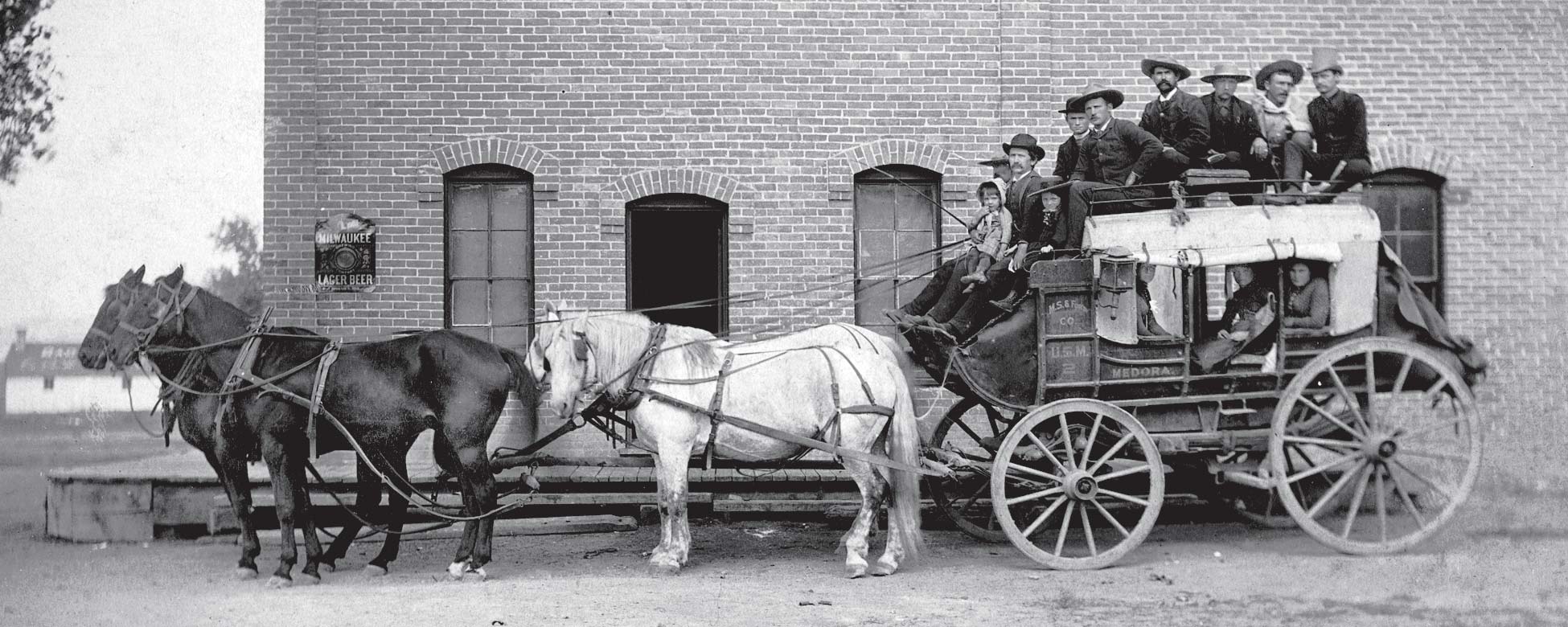
Figure 15. Medora-Deadwood Stagecoach. (SHSND 0097-46)
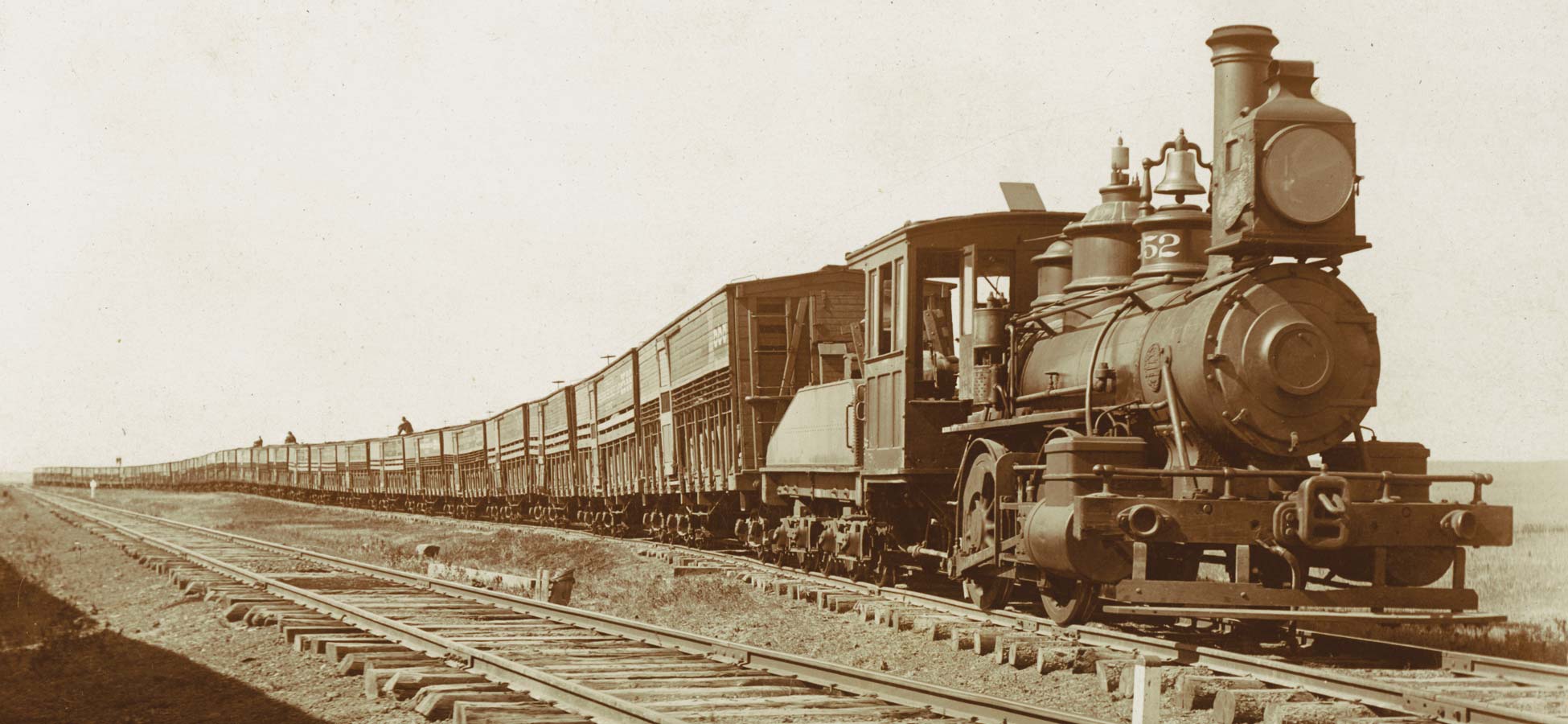
Figure 16. This early North Dakota train is pulling many “cattle cars.” (SHSND 2019-P-062-00001)
Four to six horses pulled each stagecoach. There were no towns between Bismarck and Deadwood, so stagecoach stations were set up every 20 miles along the route. Fresh horses were exchanged for the tired ones that had run from the last stop, and the passengers had a chance to get out and stretch their legs. Some of the stagecoach stations had interesting names such as “Dog Tooth,” “Grasshopper Pete,” and “Crook City.”
A smaller stagecoach line, headquartered at Medora, was called the Medora Stage Company. This line ran the 215-mile trip between Medora and Deadwood and charged 10¢ a mile, or $21.50 for a one-way fare. It took about 36 hours to travel between Medora and Deadwood. The driving time for this trip today is about 4½ hours.
The Northwest Express and Transportation Company operated from 1877 to 1880, and the Medora Stage Company was in business from 1884 to 1886. Among other stagecoach lines in North Dakota was the Fort Keogh (Key-o) Stage Line, between Bismarck and Miles City, Montana, between 1878 and 1880. Several other stagecoach lines also operated in northern Dakota. All of the stagecoach companies were put out of business by competition from the iron horse.Train



